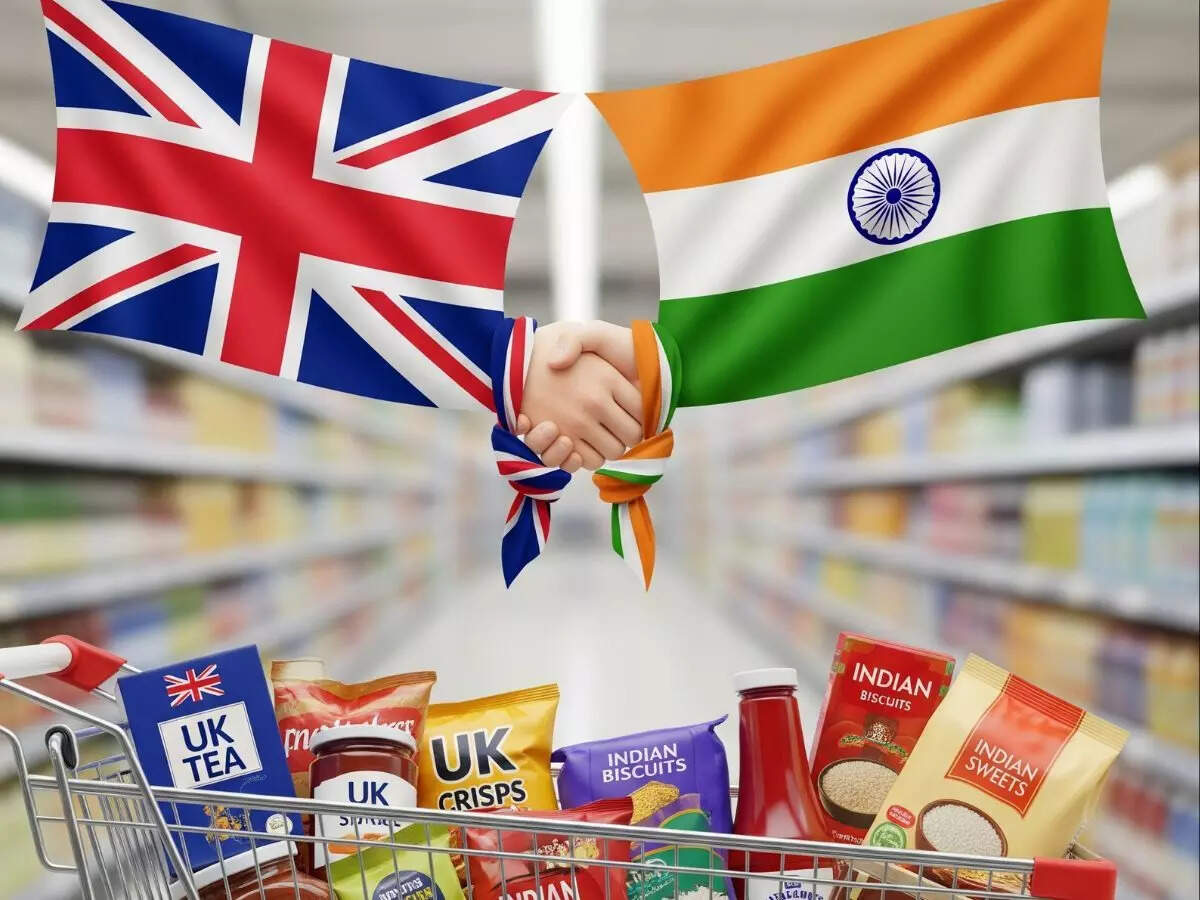
Only about a fourth of the UK’s exports by value will enjoy immediate duty-free access to the Indian market, while most of the sensitive sectors have been protected, the government said on Friday.
Briefing the media on Friday, commerce secretary Sunil Barthwal said product-specific rules of origin have been put in place. These stipulate value-addition norms that don’t allow transshipment or third-country benefits.
India has safeguarded its sensitive sectors – from dairy, cereals and millets, pulses and vegetables, to high-value items like gold, jewellery, lab-grown diamonds and certain essential oils.
Critical energy fuels, marine vessels, worn clothing, and critical polymers and their monofilaments, smartphones, and optical fibres are also excluded.
For strategically important products, particularly those where domestic capacity is being built under Make in India and production-linked incentive schemes, concessions are being provided over periods of five, seven and 10 years.
India and the UK signed a Comprehensive Economic Trade Agreement (CETA) on July 24 after years of meetings and consultations.
The accord with the UK differs from other free trade agreements as it reflects India’s transition to a more mature economy, said Barthwal. India will enter areas that hadn’t been touched upon in other trade deals as it transitions to developed country status, he said.
‘Balancing Strengths and Sensitivities’
The accord balances “sensitivities and strengths,” the official said.
“We wanted to remove the tag of tariff king and FTA is a way to do that,” Barthwal said. “FTAs bring a lot of certainty and predictability to businesses which this UK FTA will ensure. FTAs are give and take and when we build a narrative, we are sensitive that it’s not one-sided.” US President Donald Trump had referred to India as a tariff king. Barthwal also referred to negotiations with the US and the European Union.
“Detailed talks are happening in the EU FTA. Talks with the US are going on — it will fructify,” he said.
The India-UK friendship is based on fair play, equity and mutual benefit, the commerce secretary said. “We protected our sensitivities and they protected theirs. This FTA has been a balance of sensitivities and strengths. It’s a complex and comprehensive deal… Our defensive interests have been taken care of,” he said.
The UK may take less than a year to ratify the CETA and India will use that time for building the capacity of its exporters and educating them on how to benefit from the accord. The government is conducting an exercise with states and export promotion councils on how they will be impacted.
“We are doing granular studies,” he said. India and the UK have agreed to negotiate mutual recognition agreements (MRAs) to facilitate the movement of professionals such as nurses, accountants and architects to Britain. “Non-tariff barriers will be eased, and regulatory systems and MRAs would be improved,” Barthwal said.
Scotch, cars
Barthwal said that Scotch is a GI (geographical indication) product, and there is always a production limit. The duty on Scotch whisky will be reduced to 40% over 10 years.
Limited duty cuts, up to 75% over 10 years, have been offered on other alcoholic beverages, with concessions applicable only above a set minimum import price — $6 for bottled and $5 for bulk whisky. The FTA will help in exports of Indian blended whisky, he added.
“Indian malt whisky is blended with imported Scotch. So, when bulk whisky comes, it’s like an intermediate product,” the official said.
In terms of market access to automobiles, India has committed to a calibrated, phased, and development-oriented quota-based liberalisation strategy. Under this, a total annual quota of up to 37,000 cars has been provided at a reduced tariff, with a graded structure for both quota and tariffs.No concessions have been given to electric vehicles, hybrids and hydrogen-powered cars in the first five years.

